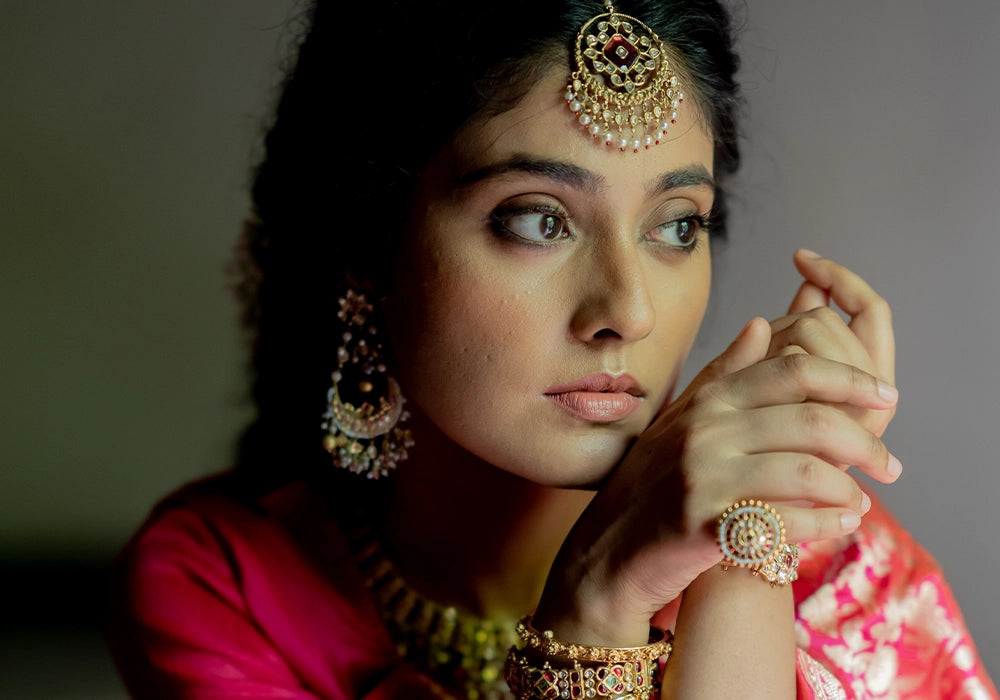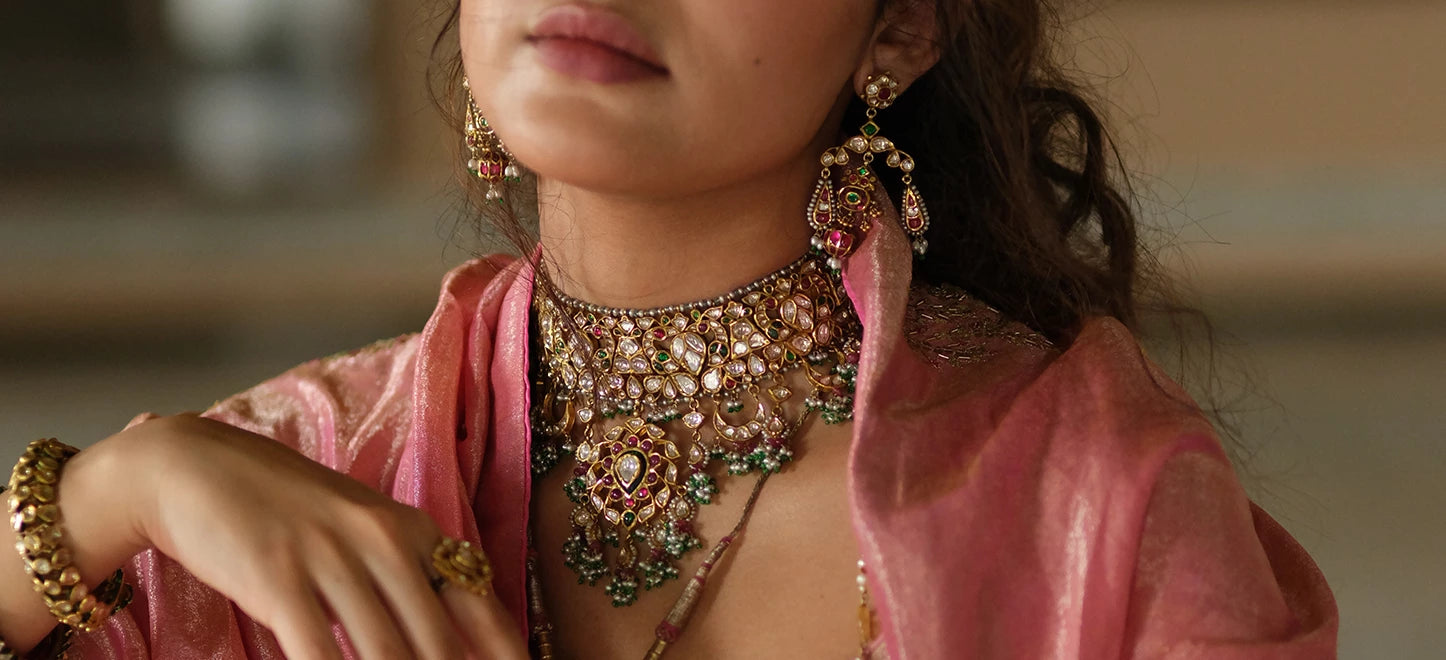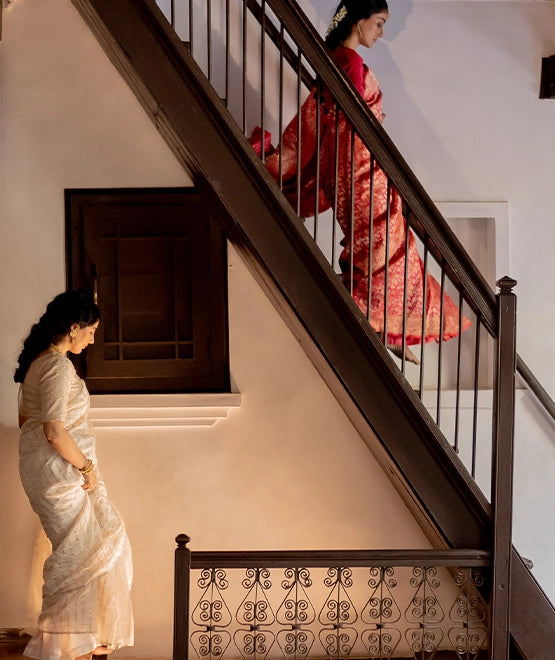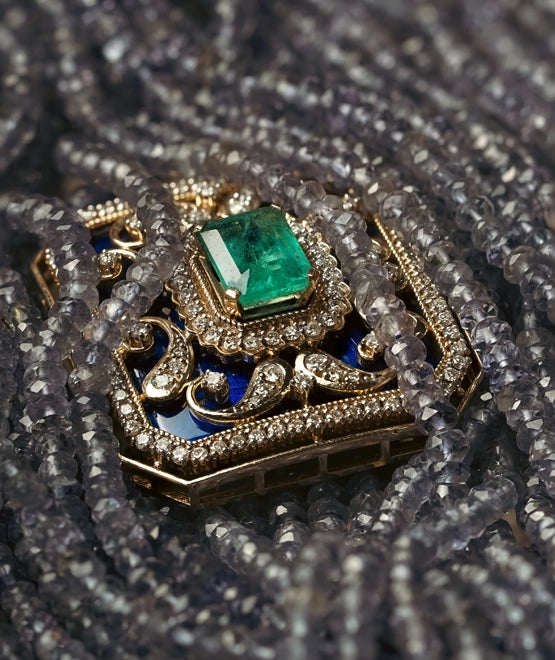Glossary
Fine jewellery: Fine jewellery is differentiated from costume or fashion jewellery primarily by the quality of the materials and the craftsmanship used in its making. Fine jewellery uses gold, platinum, 925/sterling silver, diamonds, pearls and other natural gemstones.
Art deco : A style of jewellery that originated in Paris and was popular from the mid 1920s to the 1930s. Art Deco jewellery is characterised by hard lines and angles rather than curves.
Bezel-setting : Many believe bezel setting was the earliest method of setting gemstones into jewellery. In this setting, the stone is kept in place with a raised surrounding that overlaps the edges of the stone. Many modern bezels use a grooved band and flange to hold the gem in place.
Cabochon : This is the cut on most of our colored gemstones that are set in 24K gold. This cut has no facets. Opaque and iridescent stones such as lend themselves well to the smooth, convex cabochon shape.
Chasing : Chasing technique is used to define or refine the forms of a surface design and to bring them to the height of relief required. The metal is worked from the front by hammering with various tools that raise, depress, or push aside the metal without removing any from the surface
Cocktail ring : A large or oversized ring set with precious or semiprecious stones.
Channel-setting : The simple channel setting places diamonds or gemstones in a channel so they flow like a glittering stream. This setting works well for delicate wedding bands or eternity rings with no metal visible between the stones.
Dancing Diamond : Dancing Diamond is a mechanism which allows the center diamond to move to subtle movements
Diamonds : The most precious and famed gemstone in the world of jewelry, comes from deep inside the earth, where high temperatures and high pressure naturally exist. Most were formed from carbon millions of years ago, which has been in the earth's mantle since its origins.
The Four C's of Diamonds, Cut, Color, Clarity, and Carat, are the basics that are used to select and grade all diamonds.
Cut : A diamond right out of the ground isn't much to look at, but grind away a piece here and polish a facet there and you'll end up with a sparkling stone. Properly cut diamonds have certain angles and proportions that let light in from the top, reflect it against the bottom, and then disperse it through the top again. Too shallow and light leaks out of the bottom; too tall and light veers off through the sides. The different cuts we use are brilliant-cut, rose-cut, single-cut, baguette, pear, cushion, marquise and sliced diamonds.
Color : Though we call them "white diamonds", what we really mean is "colorless". Because they're formed naturally, diamonds can contain trace amounts of other materials, giving them various tints. Historically, the brighter and more colorless a diamond, the more highly they're valued, but we think that other colors like yellow and champagne can add a warmth and romance to a design with their amber tint. There's a whole spectrum for you to discover here. On the scale that goes from D - Z (colorless to yellow) we use diamonds ranging between F - I. We also use champagne and yellow colored diamonds.
Clarity : Clarity is a measure of how many inclusions inside and blemishes on a diamond's surface can be seen, ranging from the spectacular sparkle of a flawless white to the moody glimmer of a highly included grey. The clarity has a fundamental effect on how a diamond catches the light and the grade ranges from Flawless to I3, with Flawless being the best and VVS-VS standing for Very Very Slight Inclusions and Very Slight Inclusions respectively. Our collection uses VVS and VS clarity diamonds.
Carat : Being the unit of weight measurement for diamonds, the 'ct' is what denotes the weight of diamonds used in a design.
Enamelling : A substance made of powdered glass and colouring agents can be fused onto various metals and is used to decorate pieces of jewellery.
Engraving : The process of carving a design onto a hard surface, usually metal but also on gemstone, is known as engraving.Engravings are often of designs or symbols and may be undertaken either by hand or machine.
Facets : Gemstones and diamonds are often carved into facets or angles. A single facet represents one side of something with many sides.
Inclusions : Most natural gemstones will have specific types of inclusions such as crystals, needles, clouds or fluids.
Inlay : The decorative practice of embedding a material such as polished stone or glass in another material like metal, where the surface of both is perfectly level.
Iridescence : The captivating rainbow of colours seen in a diamond or gemstone, which is created by the refraction of light waves, is known as iridescence. These scintillating colours seem to change depending on the angle and degree of light.
Karat : A karat is the unit used to measure the fineness of gold in America. It should not be confused with carat, which is used in measuring diamonds and gemstones, unless you speak British English, in which case carat applies to both. The unit of measure for the fineness of gold. Fine gold is 24 karat (Kt). Other common standards are 18Kt (750 fineness) and 14Kt (583 fineness).
Kundan setting : Kundan refers to fine or highly refined gold foil (24K), and kundan setting refers to the champleve style of setting uncut diamonds and cabochon gemstones with such foils. This setting technique or style is also known as jadau or jadtar in India.
Lustre : The amount of surface gloss - or lustre - of a gemstone depends upon its refractive index as well as the ability of the stone to take polish. Hardness is one of the most important factors. A hard gemstone allows for a better polish and thus more lustre.
Navratna: The navaratna ("nine gemstones") has been one of the most powerful talismans from India. The nine gems represent the celestial bodies of Indian astrology—Sun (ruby), Moon (pearl), Mercury (emerald), Mars (coral), Jupiter (yellow sapphire or topaz), Venus (diamond) and Saturn (blue sapphire)—and the rising (zircon or hessonite) and descending (cat's-eye) nodes of the moon.
Pavé setting : A pavé setting consists of many tiny gemstones or diamonds set closely together. The end result looks like a continuous surface of gems or diamonds and is derived from the French"to pave".
Prong setting : A prong setting uses metal projections or tines to hold a gemstone in place on a piece of jewellery.
Shank : The shank of a ring is what the top of the ring rests upon and what most people mean when they describe the band of a ring that you actually wear. Like the foundation of a building, the shank supports the entire design.



















